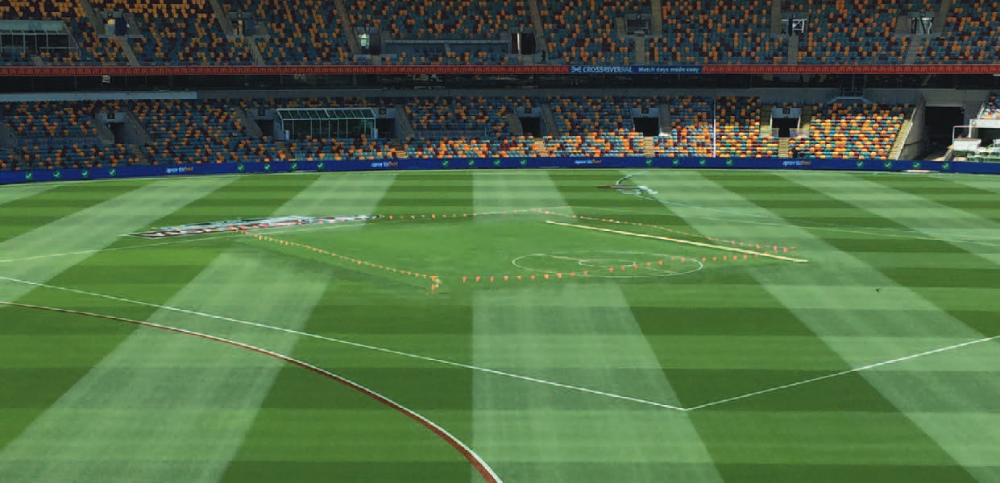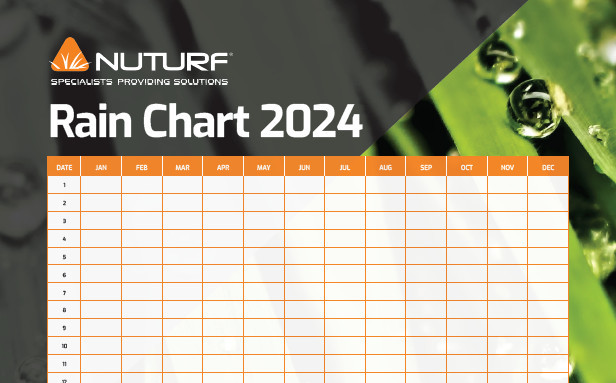How to Remove Rye from Over Sown Sportsfields
With increasing demands on both presentation and surface integrity the option of employing a two grass system on many of our sports surfaces is becoming more popular. Perennial rye grass has become the seeded grass of choice due to its rapid establishment abilities, high presentation quality, wear management assistance, and an impressive durability from late summer establishment, through winter and an ability to go well into spring with the right care.
However, for many the rye is a fixed duration surface and the goal is actually then to remove it efficiently to accelerate spring rebound of the couch canopy below and optimize the length of the growing season for the warm season grass. Ultimately this maximized growing season is looking to produce a solid surface that can tolerate doing the whole over-sow exercise again the following autumn. This is a circular activity that for some just continues.

Why removal is important
Oversowing, whilst very advantageous in many aspects, introduces intense competition for a couch base that is already well outside its preferred conditions through winter. The rye is competing physically for light, nutrients and space but is competing chemically as well. The chemical competition is known as allelopathy – a phenomenon where a plant releases biochemicals that are deleterious to competitor species. This biochemical competition can cause couch to be very thin and unwell (or absent) at the start of spring when it would otherwise be on an active rejuvenation path. Chemical removal aims to put a definitive end to the activity and presence of the rye.
Natural transition with the increasing heat of summer can be a successful removal process, but is frequently an unreliable and prolonged removal process, and if spring is wet and cool sometimes simply an unsuccessful process. The resilience of modern perennial ryes is high. There is a reason it is called ‘perennial’.
When to remove
This is a question that has a theoretical answer and then reality. Here we will jump straight to reality as the window for getting rye in, and the window for taking rye out is commonly dictated by programming considerations that can be quite site specific. Often the completion of one seasonal sport and the commencement of the next, and more specifically the gap in between, is the window. Sometimes it is of suitable duration, often it is not. If it matches an optimal environmental window then great – results will be good. If not, it is unlikely the window will change to suit.
Options for removal
Acknowledging there is a preferred theoretical ‘window’ assigned to a transition still has relevance when discussing the options for removal. Why? The task of chemically removing rye has in recent years commonly fallen to the class of chemistry known as the SU’s (Sulfonyl Ureas). An absolutely exceptional class of chemistry, they are quite unique, and contributed greatly to the decrease in herbicide volumes applied per hectare per year over the last 20 years. They are low dose, slow moving herbicides that sometimes require some patience and careful timing of use. Under cool environmental conditions their effects can be very slow. The slow nature of their movement however is one of the reasons they can completely kill some difficult to treat grasses and sedges.
Their slow movement is also why adding an adjuvant to the tank is sometimes recommended. They need to be held in the right place, for a more extended time, to optimize the actual dose entering the target. If the label recommends inclusion of an adjuvant do not ignore it. Follow the recommendations precisely.
There are a few SU’s that can remove rye from warm season grasses, but it is important to pay further attention to the subtle differences of each, especially in regards to safety to warm season species. If you have kikuyu your options are far more limited, but you still have options.
Speed of activity of the SU’s does increase with increasing atmospheric temperatures. As air temperatures rise, soil temperatures follow albeit with a lag. Point being normally the removal of the rye has a seasonal change that passively aids the activity of the herbicide.
Mechanical removal is an option. Scarifying heavily as part of a broader surface renovation to deal with accumulated thatch and a spongy canopy can concurrently tear out the rye. When combined with a significant and immediate lowering of height of cut (HOC) rye is immediately disadvantaged and highly stressed. Anecdotally, whilst mechanical removal certainly can work it is often retrospectively described as unreliable or turns out incomplete. It is for this reason chemical removal is the preferred method, and the 21 day period of transition commonly encountered is simply accepted.

Monitor for escapes - resistance is a known risk
The Sulfonyl Urea chemistries are clever and unique, but came with a known resistance risk profile higher than some herbicides that came before or after. They are very specific in their site of activity and the rule is the more specific the target site and Mode of Action (MOA), the higher the resistance risk.
Resistance risk for this chemistry class seems to be higher for some other weeds than it is for rye – particularly weeds with large seed production. Good results are still consistently being achieved for rye removal from warm season turf when good application practice is adopted. Poor results should not immediately be assumed to be resistance if good application is not able to be demonstrated.
For any herbicide treatment (especially SU herbicides), if in the period following application it is clear there are individual plants that have not been killed, and it is obvious they weren’t missed, then it is imperative efforts are made to remove them (even if it means by hand). If they are genuine escapes that occurred due to resistance, it is likely the genotype conferring the resistance will be represented in the seed produced by the plant before its death.
How Nuturf can help you
Our team have customers all over the county for whom transitioning rye grass is an annual task. We can therefore help you get the best result possible by allowing you to benefit from the experience our team has. We stock all the major SU chemistries that act as chemical removal tools and can help you optimize your application process with the manufacturer recommended adjuvants. Post removal nutrition needs are another area we can assist you with, to ensure your turf gets the best spring bounce possible. Nuturf has the technical expertise and vast resources around the country to assist all customers with their broader programming needs.
















